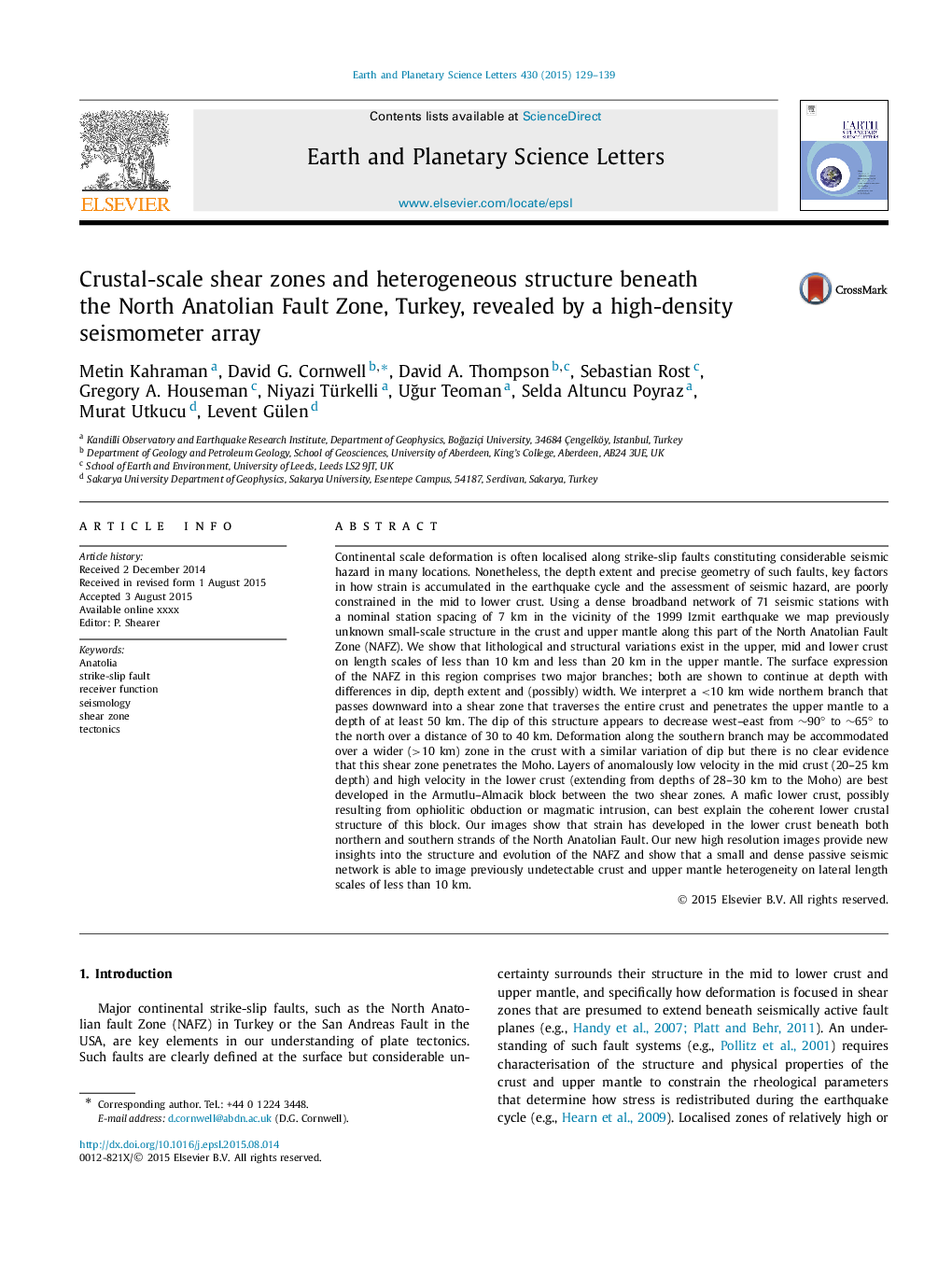| کد مقاله | کد نشریه | سال انتشار | مقاله انگلیسی | نسخه تمام متن |
|---|---|---|---|---|
| 6427917 | 1634726 | 2015 | 11 صفحه PDF | دانلود رایگان |
عنوان انگلیسی مقاله ISI
Crustal-scale shear zones and heterogeneous structure beneath the North Anatolian Fault Zone, Turkey, revealed by a high-density seismometer array
ترجمه فارسی عنوان
مناطق برشی پوسته و ساختار ناهمگن زیر منطقه گسل ناحیه آناتولی شمالی ترکیه با استفاده از آریای سنجش با تراکم بالا
دانلود مقاله + سفارش ترجمه
دانلود مقاله ISI انگلیسی
رایگان برای ایرانیان
کلمات کلیدی
آناتولی، خطای لغزش اعتصاب، تابع گیرنده، زمین لرزه، منطقه برشی، تکتونیک،
موضوعات مرتبط
مهندسی و علوم پایه
علوم زمین و سیارات
علوم زمین و سیاره ای (عمومی)
چکیده انگلیسی
Continental scale deformation is often localised along strike-slip faults constituting considerable seismic hazard in many locations. Nonetheless, the depth extent and precise geometry of such faults, key factors in how strain is accumulated in the earthquake cycle and the assessment of seismic hazard, are poorly constrained in the mid to lower crust. Using a dense broadband network of 71 seismic stations with a nominal station spacing of 7 km in the vicinity of the 1999 Izmit earthquake we map previously unknown small-scale structure in the crust and upper mantle along this part of the North Anatolian Fault Zone (NAFZ). We show that lithological and structural variations exist in the upper, mid and lower crust on length scales of less than 10 km and less than 20 km in the upper mantle. The surface expression of the NAFZ in this region comprises two major branches; both are shown to continue at depth with differences in dip, depth extent and (possibly) width. We interpret a <10 km wide northern branch that passes downward into a shear zone that traverses the entire crust and penetrates the upper mantle to a depth of at least 50 km. The dip of this structure appears to decrease west-east from â¼90° to â¼65° to the north over a distance of 30 to 40 km. Deformation along the southern branch may be accommodated over a wider (>10 km) zone in the crust with a similar variation of dip but there is no clear evidence that this shear zone penetrates the Moho. Layers of anomalously low velocity in the mid crust (20-25 km depth) and high velocity in the lower crust (extending from depths of 28-30 km to the Moho) are best developed in the Armutlu-Almacik block between the two shear zones. A mafic lower crust, possibly resulting from ophiolitic obduction or magmatic intrusion, can best explain the coherent lower crustal structure of this block. Our images show that strain has developed in the lower crust beneath both northern and southern strands of the North Anatolian Fault. Our new high resolution images provide new insights into the structure and evolution of the NAFZ and show that a small and dense passive seismic network is able to image previously undetectable crust and upper mantle heterogeneity on lateral length scales of less than 10 km.
ناشر
Database: Elsevier - ScienceDirect (ساینس دایرکت)
Journal: Earth and Planetary Science Letters - Volume 430, 15 November 2015, Pages 129-139
Journal: Earth and Planetary Science Letters - Volume 430, 15 November 2015, Pages 129-139
نویسندگان
Metin Kahraman, David G. Cornwell, David A. Thompson, Sebastian Rost, Gregory A. Houseman, Niyazi Türkelli, UÄur Teoman, Selda Altuncu Poyraz, Murat Utkucu, Levent Gülen,
